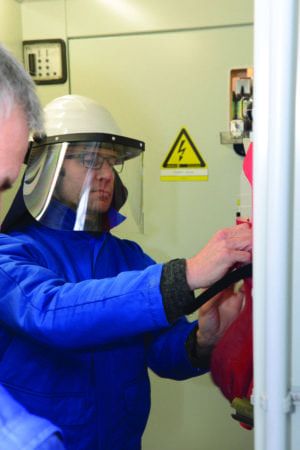By digitizing its operation, a venerable European inspection firm hopes to boost productivity by 15 percent and open the door to new business opportunities.
Paper has flowed through the heart of Vinçotte’s business operations since 1872, when a young engineer named Robert Vinçotte first founded the organization to inspect the safety of steam boilers in Belgian factories.
Today the Brussels-based firm inspects and certifies processes and machinery across a wide range of industries, including ensuring the safety of elevators and other electrical, civil engineering and environmental systems. Its highly skilled team of 1,500 technicians (Vinçotte calls them inspectors) manage millions of diverse assets across many countries, including Belgium, the Netherlands, Luxemburg and Japan.
Remarkably, much of the organization’s business is still transacted on paper. But the paper trail will soon run dry as Vinçotte launches an ambitious project to digitize its operation.
Why now? Luc Verbist, Vinçotte’s CIO, puts it plainly: “If we do not change, we’ll lose our customers.”
The Problem with Paper
 Tradition runs deep at Vinçotte, and even today many inspections are done on pen and paper and sent back to the office for processing. It can take three or four weeks after an inspection before customers receive their safety report. This is not only frustrating for customers — it’s also costly for Vinçotte.
Tradition runs deep at Vinçotte, and even today many inspections are done on pen and paper and sent back to the office for processing. It can take three or four weeks after an inspection before customers receive their safety report. This is not only frustrating for customers — it’s also costly for Vinçotte.
“If you send the invoice sometimes months after the inspection and there’s a dispute about the invoice, then you don’t get your money,” Verbist says.
On top of the administrative costs of managing the inspection process, doing business by paper has another hidden expense: It costs a staggering 450,000 Euros ($528,000) in postal stamps annually just to mail the reports.
Beyond eliminating the price of postage stamps, digitization will bring both the business and its customers obvious and immediate benefits, according to Verbist.
As soon as Vinçotte begins its phased roll-out of ServiceMax in January 2018, customers will be able to sign off on their inspections electronically while the inspector is still on site, drastically reducing Vinçotte’s administrative overhead.
It will also reduce disputes, since every item will be photographed and time-stamped when and where it’s inspected, providing proof that the inspection took place.
A Digital Rebuild from the Ground Up
Vinçotte is taking an “incubated prototyping approach” to its roll-out, Verbist says . It has carefully chosen 15 inspectors for the initial phase, before cascading the roll-out to more groups of inspectors within the company.

Luc Verbist
“We handpicked 15 inspectors — and I say handpicked because we really selected [inspectors who were] open to innovation and not afraid of handling smartphones or tablets,” Verbist says. “With them, we are building not just the software, but redefining processes and procedures and redefining what a report looks like.”
Following the pilot with the 15 inspectors, roughly 200 inspectors will be trained on some relatively simple inspections for residential customers. Then they will pass the baton to the next group of inspectors — until, by the end of 2018, most inspections will be digitized.
“It’s creating transparency, which we don’t have at the moment. The fact that [the inspectors] know what they do is transparent will change their behavior as well,” says Verbist.
Beyond modernizing its operations, Vinçotte has ambitious plans to use the data collected from digitizing its field inspections.
“What we could do as part of the physical inspection is to check whether the sensors generating data are really calibrated and whether they are sending the right data,” Verbist says. “We would be an unbiased, neutral partner that can verify the data.”
Verbist believes that going digital is not only a win for Vinçotte and its customers, but for elevator manufacturers as well.
“It’s a win for all of us, because it could be a selling point for the Schindlers, Schneiders and Otises of this world.”


Share this: